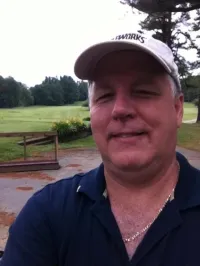Online Marketing Tips Blog
In this Daily blog, I'll try to answer the most burning questions for online marketing that I get in my consulting business. We help online business owners who are in affiliate marketing, coaching, eLearning and Online Events every single day. I'll share that info with you!

The Power of Silence in Sales: An Alex Hormozi Secret to Boost Conversions
Sales professionals are often taught to perfect their pitch, handle objections with finesse, and close with confidence. But what if the key to skyrocketing conversions isn’t in what you say, but what you don’t say? If you’re ready to tap into a subtle yet powerful technique to increase your close rates by 32%, it’s time to discover the brilliance of the Silent Close Technique—a strategy shared by renowned entrepreneur and sales expert Alex Hormozi.
This blog will break down why silence is often the most effective tool in a salesperson’s arsenal, how it aligns with human psychology, and the simple steps you can take to master this game-changing technique.
Why Silence is a Game-Changer in Sales
We’ve all heard the saying, “Silence is golden.” But in sales, it can be worth even more—it’s the key to unlocking better conversions. Research from Columbia Business School reveals that when salespeople intentionally extend their silence to 8 seconds or more after asking for the sale, purchase rates increase by an impressive 32%.
This number is staggering, especially when you consider that many sales professionals fail to leverage this strategy.
Now let's compare this with another finding from the University of Texas. On average, most salespeople wait only 2.7 seconds after asking for the sale before speaking again. This hurried response often disrupts the prospect’s decision-making process and derails the path to agreement. By simply pausing longer, you allow your prospect's brain to process the decision, giving them the mental space to buy into your offer unapologetically.
The Science Behind the Silent Close Technique
Why does silence work so well? To understand this, we need to dig into buyer psychology. Here’s why the Silent Close Technique works:
• Decision-Making Takes Time
When presented with a decision—particularly for a large investment—your prospect’s brain needs 6 to 8 seconds to process the information, calculate the value, and weigh the potential risks. Interrupting this mental calculus by speaking too soon essentially “resets” their thought process, making them less likely to decide in your favor.
• Silence Creates Pressure
Silence can feel awkward, but it also creates a natural pressure for the prospect to fill the gap. Most people will feel compelled to respond—and in the process, give you the green light you’re waiting for.
• Silence Signals Confidence
Talking too soon can come off as nervousness or desperation. Silence, on the other hand, radiates assurance. It sends an unspoken message that you’re confident in your offer and willing to give them the time they need to consider it.
How to Implement the Silent Close Technique
Using silence effectively isn’t about staying quiet for the sake of it. It’s about timing and intentionality. Alex Hormozi explains that the key lies in giving your prospect uninterrupted space to think after you’ve asked for the sale.
Here’s how to use the Silent Close Technique in your sales process:
Step 1: Ask for the Sale Clearly
First and foremost, make your “ask” clear and confident. Ambiguity is the enemy of conversions. Use phrases like:
• “Are you ready to move forward?”
• “Would you like me to send over the contract?”
• “Can we process your payment now to secure your spot?”
The key is to deliver the proposal in a straightforward, no-fluff manner.
Step 2: Pause and Count to 8 Silently
After making the ask, do nothing. This is the part where most salespeople feel the itch to speak—but don’t give in! Silently count to 8 in your head. Better yet, use the timer function on your phone or call dialer to ensure that you’re letting the full 8 seconds pass.
Step 3 (for the Brave): Count to 8 Again
Still haven’t received a response? Resist the urge to rush in with more information or an alternative pitch. Count to 8 again. Most of the time, the prospect will break the silence. Remember, the more they talk, the closer you are to closing the deal!
Step 4 (Optional): Address Objections Thoughtfully
If the client speaks but doesn’t commit yet, use this as an opportunity to uncover their real concerns. But stay calm—this isn’t the time for over-explaining or high-pressure tactics. Guide the conversation gently back to their goals or pain points and how your solution addresses them.
Lessons from Real Sales Teams
This technique might sound simple enough, but putting it into practice requires discipline. Hormozi himself reports that when he introduced the Silent Close Technique to a sales team, they saw an immediate uptick in their results. Notably, this increase didn’t come from changing their pitch or adding new tools—but simply from extending the pause after asking for the sale.
For sales professionals who weren’t already using the technique, the numbers were particularly impressive. A 32% boost in close rates isn’t just significant—it’s transformational.
Pro Tip for Success:
While the Silent Close Technique is simple, it can feel painfully long in execution. 8 seconds might seem like an eternity when you’re sitting on a call or in a meeting. Practice timing yourself with a stopwatch until you’re comfortable with the length.
Frequently Asked Questions About Silence in Sales
1. Doesn’t silence feel awkward for both parties?
Yes, at first. But this awkwardness often works to your advantage. Remember, humans are wired to fill silence—and doing so can lead them to voice their agreement or positive feedback about your offer.
2. Will silence work in every situation?
Silence is most effective when paired with a strong pitch and a clear call to action. If your offer isn’t compelling or lacks clarity, no amount of silence will make up for it.
3. What if my client backs out after the pause?
Not every prospect will say yes—but silence won’t drive them away. If anything, it gives them the space to articulate their concerns, which you can then handle gracefully.
Put the Silent Close Technique into Action Today
The Silent Close Technique perfectly illustrates the power of less in a world of more. By leaning into the discomfort of silence, you can create space for your prospects to confidently process their buying decisions.
If you’d like to take your sales skills even further, start small. Use the Silent Close Technique in your next pitch, and keep track of your results. You might be surprised just how much of a difference this subtle shift can make.
Remember the golden rule of sales communication—“The person who talks first after the price, loses.” Will you be the one to hold your silence?
The best course I’ve seen for making sales is taught by Russell Brunson. I know I share a lot of Russell’s courses here, but he really does teach some of the best techniques available.
This one is called the Selling Online Challenge and you can check it out [at this link].
Disclaimer: If you click on links we provide and make a purchase, we may receive compensation. There is never any guarantee of income in any of the links or programs we provide.
If you have specific questions you would like to see answered in this blog, please send them to me at [email protected]. I will try to address every question here.
If you follow the links in my blog, some of them will be affiliate links and I will be compensated if you purchase a course or product from these links. This is no way increases your price or changes my opinion on these courses. I only recommend things I use in my business.
For the absolute best training online for Affiliate Marketing, Coaching, Events & Masterminds and eLearning - Online Courses: Check out our Flagship Program Here.

Copyright © 2025 | All Affiliate Cash | All Rights Reserved
There may be affiliate links on these pages. When you follow them and purchase something, I may be paid a commission. This does not raise your cost of the item, and does not influence my opinion or review of the item in any way.
NOT FACEBOOK™: This site is not a part of the Facebook™ website or Facebook Inc. Additionally, This site is NOT endorsed by Facebook™ in any way. FACEBOOK™ is a trademark of FACEBOOK™, Inc.

